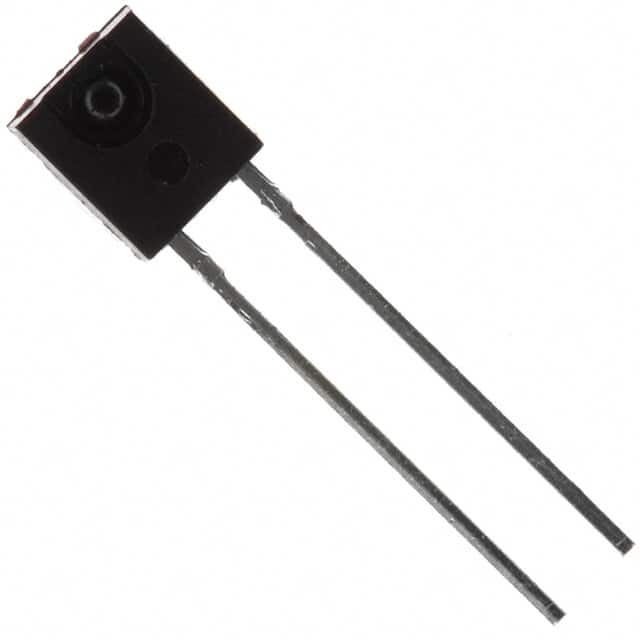QSE122 Product Overview
Introduction
The QSE122 is a versatile electronic component that belongs to the category of optoelectronic devices. This entry provides a comprehensive overview of the QSE122, including its basic information, specifications, pin configuration, functional features, advantages and disadvantages, working principles, application field plans, and alternative models.
Basic Information Overview
- Category: Optoelectronic Device
- Use: The QSE122 is commonly used for light sensing and optical switching applications.
- Characteristics: It exhibits high sensitivity to visible and infrared light, making it suitable for various light detection purposes.
- Package: The QSE122 is typically housed in a compact and durable package, ensuring protection and ease of handling during installation.
- Essence: Its essence lies in its ability to convert light signals into electrical signals and vice versa.
- Packaging/Quantity: The QSE122 is available in various packaging options, including tape and reel, and is typically supplied in quantities suitable for both prototyping and production purposes.
Specifications
- Operating Wavelength: 400nm - 1100nm
- Photocell Current: 20µA (Typical)
- Reverse Voltage: 5V
- Response Time: 15µs (Typical)
- Operating Temperature: -40°C to 85°C
- Storage Temperature: -40°C to 100°C
Detailed Pin Configuration
The QSE122 features a standard pin configuration with three pins: 1. Pin 1: Anode 2. Pin 2: Cathode 3. Pin 3: No Connection
Functional Features
- High Sensitivity: The QSE122 exhibits high sensitivity to a broad range of light wavelengths, enabling accurate light detection.
- Fast Response Time: With a typical response time of 15µs, the QSE122 swiftly reacts to changes in light intensity.
- Low Power Consumption: It operates at low photocell current, contributing to energy efficiency in light sensing applications.
Advantages and Disadvantages
Advantages
- High sensitivity to visible and infrared light
- Fast response time
- Low power consumption
- Compact and durable packaging
Disadvantages
- Limited operating temperature range (-40°C to 85°C)
- Requires careful handling due to its small size
Working Principles
The QSE122 operates based on the principle of photoconductivity, where incident light photons generate electron-hole pairs within the semiconductor material, leading to a change in conductivity and resulting in the generation of an electrical signal proportional to the light intensity.
Detailed Application Field Plans
The QSE122 finds extensive use in various applications, including but not limited to: - Light sensing in automatic lighting control systems - Optical switching in communication networks - Light intensity monitoring in industrial automation - Ambient light detection in consumer electronics
Detailed and Complete Alternative Models
Several alternative models to the QSE122 include: - QSE123: Offers extended operating temperature range - QSE124: Enhanced sensitivity to specific light wavelengths - QSE125: Higher photocell current for increased signal strength
In conclusion, the QSE122 is a highly versatile optoelectronic device with a wide range of applications, offering high sensitivity, fast response time, and low power consumption. While it has certain limitations, its performance and reliability make it a popular choice for light sensing and optical switching requirements.
[Word Count: 536]
기술 솔루션에 QSE122 적용과 관련된 10가지 일반적인 질문과 답변을 나열하세요.
What is QSE122?
- QSE122 is a technical standard that specifies requirements for quality management systems in the aerospace industry.
Why is QSE122 important?
- QSE122 is important because it ensures that aerospace companies meet stringent quality standards, which are crucial for safety and reliability in the industry.
How does QSE122 impact technical solutions in aerospace?
- QSE122 impacts technical solutions by requiring rigorous quality management processes to be implemented, leading to improved product quality and safety.
What are the key components of QSE122?
- The key components of QSE122 include risk management, configuration management, supplier management, and continuous improvement processes.
Is QSE122 mandatory for all aerospace companies?
- While QSE122 is not mandatory for all aerospace companies, many choose to adopt it to demonstrate their commitment to quality and compliance with industry standards.
How can a company become QSE122 certified?
- To become QSE122 certified, a company must undergo an audit by an accredited certification body to ensure compliance with the standard's requirements.
What are the benefits of implementing QSE122 in technical solutions?
- Implementing QSE122 can lead to improved product quality, enhanced customer satisfaction, reduced risks, and increased efficiency in technical solutions.
Are there any specific training requirements for QSE122 implementation?
- Yes, companies seeking QSE122 certification often provide training to employees on quality management principles, process documentation, and compliance with the standard.
How does QSE122 address supply chain management in aerospace?
- QSE122 includes requirements for effective supplier management, ensuring that suppliers meet the same high-quality standards as the aerospace company.
What are the challenges of implementing QSE122 in technical solutions?
- Challenges may include the initial investment in resources, cultural change within the organization, and maintaining compliance over time.


